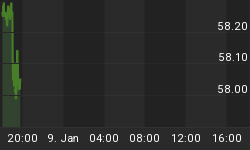That Keynesian economic dogma has been a complete and utter failure is readily evident as we look around the world. For one, the U.S. economy will reenter recession in first of the new year as Obama Regime's tax increases crush the potential for economic growth. U.S. unemployment remains stubbornly above 9%. Rather than Keynesians surrendering as they should, they place the blame not on their policies but those advocating change. Cure the economic woes of today? Ban university tenure for Keynesian economists, retroactively!
Nations of the EU have clearly demonstrated that attempting to create prosperity though debt will lead to nothing but economic pain and woes. Greece, U.S., et al thought the debt fueled party would go on far ever. It did not. Yet that is still the continuing prescription put forth by Keynesian ideologues. They now claim that their policies should not be shredded, but rather that more debt should be issued to solve the U.S. economic malaise. If hitting yourself in the head with a hammer does not cure one's headache, just hit it harder. We will return to the danger posed by Keynesians.

A big question that Gold investors must answer is why US$Gold and US$Silver have produced essentially zero return since the middle of December 2009. Why have Canadian$Gold and Indian RPGold also failed to produce a positive return in that same period? Only EU investors have truly enjoyed a meaningful positive return from Gold. British investors, we note, have had a modest gain. 2010 was to be the big year for Gold, and so far it is little more than a damp squib.
Part of the reason for these results is that the quantity of U.S. dollars has been growing at an anemic rate. If the quantity of dollars is rising faster than the quantity of Gold, the dollar price of Gold should rise. The reverse is also true. As is readily evident in our first graph, below, the quantity of U.S. dollars is growing, but at an anemic rate. The rate of growth in U.S. dollars does not justify a dramatically higher dollar price for gold, AT THIS TIME. Caveat in that sentence is important.

Our second graph, above, is one at which we have looked before. That blue line is the one on which to focus. It is Federal Reserve Credit, the asset side of the Federal Reserve's balance sheet. In short, Federal Reserve Credit is the monetary base from which the U.S. money supply grows.
Notice now the arrow added to that chart. Federal Reserve Credit is no greater than it was in December of 2009. More recently, it has been declining as the Federal Reserve attempts to unwind their previous injections of reserves during the financial panic. Without growth of Federal Reserve Credit, the U.S. money supply has great difficulty expanding. Shrinking Federal Reserve credit is a sure way of contracting the U.S. money supply.

However, the money supply dance takes more than Federal Reserve Credit. Your bank is also required to participate in the process. Banks use that Federal Reserve Credit, the monetary base, to make loans. That lending process within the banking system is what creates money, most of which is in the form of checking accounts at banks. As the chart above portrays, banks have not been lending money. They have actually been contracting their lending and investing activities. That failure to make loans is why the U.S. money supply has had anemic growth.
Why are bank loans not expanding? First, bankers have not recovered from the painful experience of the past few years. Many are still trying to collect ones that were previously made. Second, businesses are reluctant to borrow money for U.S. projects. Why borrow to invest in a business in the U.S. given the Obama Regime's punitive regulations, massive health care tax, and all the other taxes being implemented? Where would you build a project, in China or under the Obama Regime?
That brings us back to the Keynesian ideologues running U.S. economic policy. Clearly, to date, their policies have been a failure. Government policy makers when faced with failure, do more of the same. Latest policy being discussed is referred to by an acronym, QE, to minimize the chances of the public discovering what it really means. QE, you see, is the white flag!
QE means Quantitative Easing. It is Keynesian jargon for monetary policy that has failed. In QE, the central bank attempts to force feed money into the economy. Japan tried it, and it was a complete failure. But Keynesians, like cats, are hard to train. Japan's QE did manage to reduce the value of the yen by more than 25%.
Good reasons exist for lethargic action of $Gold this year. Good reasons also exist for holding that $Gold due to possibility, a very real one, of Keynesians unleashing QE as official U.S. monetary policy. U.S. investors should retain their Gold as "QE anti venom." Others need to look at their individual situation. Canadians may be at the greatest risk. Loonie is over valued, and the Canadian economy, as partly evidenced by recent labor report, is high risk. Two best shorts around might be Vancouver housing and Canadian bank stocks. EU investors need to add to Gold on price weakness as the political will to constrain Keynesianism may be weaker than popularly believed. British investors should be buying Gold as the pound has no long term. Indian investors should add to Gold on price weakness simply as ongoing insurance against politicians.
GOLD THOUGHTS is from Ned W. Schmidt,CFA,CEBS as part of a joyous mission to save investors from the financial abyss of paper assets. He publishes The Value View Gold Report, monthly, and Trading Thoughts. To receive these reports, go to www.valueviewgoldreport.com.
















